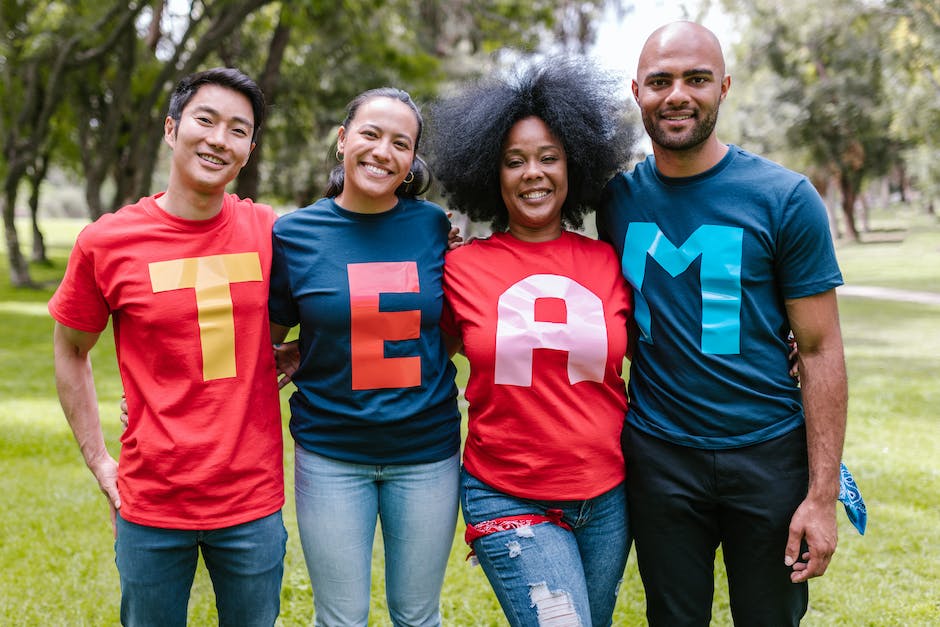Embracing diversity and inclusion at the workplace is not just a corporate nice-to-have; it’s a fundamental necessity that drives innovation, fosters creativity, and propels organizations towards sustained success. Whether it’s different perspectives, backgrounds, experiences, or abilities, diversity serves as the lifeblood of an organization, ensuring its adaptability in a rapidly changing world. Inclusion, on the other hand, fosters an environment where everyone is valued, respected, and engaged – a crucial factor that enhances employee satisfaction and productivity. This comprehensive report delves into these interconnected concepts, scrutinizes the current state of diversity and inclusion across industries, highlights effective strategies and best practices, and explores the underpinning legislations and regulations.
Understanding Diversity & Inclusion
Understanding Diversity and Inclusion
Diversity refers to the collective mix of differences and similarities that include, for example, individual and organizational characteristics, work experiences, backgrounds, and behaviors. These can involve various dimensions like race, gender, age, nationality, ethnic background, sexual orientation, educational background, among other qualities. Inclusion, on the other hand, is the act of creating a work environment that values and utilizes the insights and perspectives of all employees. While diversity focuses on the mix, inclusion refers to an individual’s experience within that mix and the degree to which they feel valued and respected.
The Difference Between Diversity and Inclusion
While these terms are often used interchangeably, they represent two different concepts. Diversity is about representation or the make-up of the workforce. It is the presence of people from various backgrounds and experiences. On the other hand, inclusion is about behavior and culture. It is the practice of ensuring that employees feel a sense of belonging and are treated equitably. An organization can be diverse without being inclusive, but true effectiveness and productivity come when both diversity and inclusion are embraced.
The Importance of Diversity and Inclusion at the Workplace
Diversity and inclusion carry immense significance in the workplace. They foster a more creative and innovative workforce. Bringing together workers with different qualifications, backgrounds, and experiences, allows for more effective problem-solving by offering various perspectives and ideas. Diversity also promotes a culture of acceptance, improving employee morale and engagement. This contributes to increased productivity, as people who feel valued and respected are often more motivated and committed to the organization’s goals. Furthermore, diversity enhances an organization’s ability to reach diverse customers and understand their needs better.
Benefits of Workplace Diversity & Inclusion
Research and studies have demonstrated numerous benefits of fostering diversity and inclusion in the workplace. According to the Harvard Business Review, diverse teams are more innovative, which ultimately leads to market growth. A report from the McKinsey & Company also found that companies with greater racial and gender diversity are more likely to have financial returns above their respective national industry medians.
Moreover, a diverse and inclusive workplace tends to attract more diverse talent. According to Glassdoor survey, 67% of job seekers consider workplace diversity an essential factor when considering employment opportunities. Thus, promoting diversity and inclusion creates a wider pool of talent, capturing a breadth of skills and experience necessary for business innovation and growth.
Furthermore, a diverse and inclusive environment fosters mutual respect among employees. It promotes understanding and appreciation of differences, leading to better teamwork, fairer management practices, and a more harmonious workplace environment. As a result, it can reduce instances of workplace discrimination and increase employees’ sense of belonging, leading to improved job satisfaction and lower staff turnover rates.
To summarize, diversity and inclusion are more than just lofty concepts. They are practicable entities that significantly enhance business procedures. These terms represent more than just political correctness; they are integral to the growth and productivity of organizations. A key realization is that diversity provides an opportunity to take a seat at the table, while inclusion means giving everyone a voice and belonging is about ensuring that this voice is heard.

Photo by shanerounce on Unsplash
Assessing Current State of Diversity & Inclusion
A Closer Look at the Present State of Diversity & Inclusion
Diversity and inclusion comprise a multitude of qualities that range from race, religion, age, gender identity, sexual orientation, to physical abilities, socioeconomic status, and cultural backgrounds. Towards the context of a workplace, these terms mean fostering an environment that values and pursues a variety of ideas, experiences, and viewpoints. Furthermore, it also ensures that individuals are treated justly and respectfully, regardless of their distinctive characteristics.
Analyzing Current Statistics
Today, diversity and inclusion have become a higher priority for companies across the globe, especially in north America. Despite this, recent statistics illustrate a somewhat contrasting image. In 2019, a report by McKinsey showed that companies at the top for ethnic and cultural diversity were 36% more likely to experience above-average financial growth. However, gender diversity only saw a 25% likelihood of outperforming less diverse counterparts. Interestingly, the site ‘Glassdoor’ reported that 76% of job seekers consider diversity an important factor when evaluating job offers and companies.
Diversity and Inclusion in Various Industries
Workplace diversity and inclusion vary significantly across industries. The technology sector, notorious for its perceived ‘bro culture’, tends to lack diversity. Recent statistics reveal that the representation of women in major tech companies worldwide is still under 30%. Similarly, ethnic minorities are underrepresented, with African Americans making up only 3% of employees at top tech companies.
By contrast, the healthcare industry, which is far more equitable, has close to 77% women employees in the U.S. However, even in this more equitable performance, issues linked to underrepresentation and lack of inclusion persist.
Common Challenges Faced by Organizations
Even with the increased focus on diversity and inclusion, organizations face myriad challenges in cultivating inclusive workplaces. Stereotyping and unconscious bias can significantly affect recruitment and retention efforts, leading to a lack of diversity across different levels of the organization. In addition, companies often struggle with building a workplace culture that not only preaches diversity but also practices inclusion.
Lack of executive commitment can also be a barrier to diversity and inclusion. If the organization’s leaders do not emphasize these initiatives’ importance or fail to set a positive example, employees are less likely to respect and adhere to diversity and inclusion policies.
Another major challenge lies in the execution and evaluation of diversity and inclusion initiatives. Without proper tracking mechanisms, skewed perceptions can arise, leading to the perception of diversity as a numbers game.
Diving into Diversity & Inclusion
Many reputable research studies and reports draw attention to the benefits and crucial nature of having a diverse workforce. A particular study conducted by Boston Consulting Group (BCG), for example, discovered a link between diverse management teams and increased revenues, demonstrating a 19% rise attributed to innovative thought processes.
However, not everything is rosy. A report from Deloitte revealed that while an overwhelming majority of executives, about 69%, consider diversity and inclusion important themes, a mere 13% actually have ready-to-apply programs to steer tangible change. These studies underscore the gap between the concept of diversity and inclusion and its systematic implementation, underlining the imperative for embedding it deeper into corporate culture and daily practices.

Best Practices for Diversity & Inclusion
Decoding Diversity and Inclusion
The core tenets of workplace diversity and inclusion revolve around acceptance, respect, and understanding. This denotes recognition of the age-old truth that everyone is unique and distinguishing individual differences. These differences could span across various dimensions, like race, gender, ethnicity, sexual orientation, social and economic status, age, physical abilities, religious and political beliefs, among others. Inclusion means fostering a sense of belonging, valuing all employees for their unique talents, cultural backgrounds, beliefs, and lifestyle practices.
Benefits of Diversity and Inclusion
A diverse and inclusive workplace is beneficial for both businesses and employees. It can drive innovation, foster creativity, capture a greater share of the consumer market, promote higher quality decisions, and enhance economic growth. In a Deloitte study, it was found that companies that prioritize diversity generate 19% more revenue. Apart from the financial advantages, it also boosts morale and enhances teamwork. A Harvard Business Review study revealed that diverse teams were able to solve problems faster than teams with similar individuals.
Strategies to Foster Diversity and Inclusion
There are numerous ways organizations can foster diversity and inclusion. They can ensure that their hiring processes are free from bias, by using structured interviews, standardizing interview questions for all candidates, and implementing diversity-targeted recruiting strategies. It is also important to promote a culture of openness and inclusivity where employees feel comfortable expressing their ideas and perspectives.
Case Study: Microsoft’s Approach to Diversity and Inclusion
One notable example of a company that has successfully implemented diversity and inclusion strategies is Microsoft. In addition to making diversity and inclusion one of the three core priorities of their cultural transformation, they implemented unconscious bias training for employees. They also established Employee Resource Groups (ERGs), where employees can connect, learn, and support each other. These ERGs include groups like Women at Microsoft, Blacks at Microsoft, and differently-abled employees group at Microsoft. In 2019, Microsoft reported a significant increase in the diversity of its staff, with the percentage of female employees increasing to 27.6%, BAME (Black, Asian and Minority Ethnic) employees increasing to 34.7%, and differently-abled employees increasing to 5.1%.
Practical Steps for Promoting Inclusion and Respect for Diversity
Promoting inclusion and respect for diversity can be achieved through practical steps such as role playing exercises, diversity training, awareness workshops, and recognizing cultural holidays. It is paramount to maintain a regular communication about the importance of diversity and inclusion through newsletters, meetings, or a dedicated diversity and inclusion portal. It is also important for organizations to establish non-negotiable standards of behavior to be followed by all employees. A clear complaint or grievance process should be put in place to address any instances of discrimination or disrespect. By taking these steps, organizations can foster a welcoming and inclusive environment that encourages diversity and inclusion.
Inclusion Starts with Leadership
Overall, successful diversity and inclusion strategies start with top leadership commitment. Each leadership member should understand the benefits of diversity and must dedicatedly drive the processes and initiatives that encourage diversity and inclusion. For diversity and inclusion to be integrated into the organizational culture, it cannot be treated as a one-off initiative confined to human resources. Everyone from executives to front-line employees must be inculcated with the values of diversity and inclusion, making it a part of the organization’s DNA.
Leveraging Innovation Through Diversity
Creating an environment that upholds diversity and inclusion not only nurtures a sense of belonging but is also vital in driving innovation. When companies emphasize these two qualities, they tend to realize more productive outcomes. It’s noted in a Harvard Business Review study that these companies were 75% more likely to see their employees’ ideas shaped into products and services. A workplace that acknowledges diversity and supports inclusion allows for employees to feel accepted and boosts their ability to think creatively. Ultimately, the value of diversity and inclusion is collectively enhanced by the variety of perspectives it invites.

Legislation and Regulation
Comprehending American Laws and Regulations Pertinent to Diversity
The formulation and implementation of diversity and inclusion in the workplace are heavily secured by a multitude of federal laws and regulations in the U.S. The Civil Rights Act of 1964 is an essential law, especially Title VII, which is designed to prevent any kind of workplace discrimination based on distinct attributes like race, color, religion, sex and nationality. Discrimination against employees or applicants who are 40 years old or above is prohibited by the Age Discrimination in Employment Act (ADEA).
The discrimination of individuals with disabilities is shielded by The Americans with Disabilities Act (ADA). Furthermore, The Equal Pay Act of 1963 advocates for gender equality in terms of remuneration for the same work. The Immigration Reform and Control Act (IRCA) bars discrimination against nationality or citizenship status for both employees and job applicants. The Genetic Information Nondiscrimination Act (GINA) and the Uniformed Services Employment and Reemployment Rights Act (USERRA) provide protection against discrimination based on genetic details and maintain job rights for those in military service, respectively.
Role of Regulatory Bodies
Regulatory bodies play a crucial role in enforcing these legislations and promoting diversity and inclusion in American workplaces. The Equal Employment Opportunity Commission (EEOC) is a primary regulatory body responsible for enforcing federal laws related to workplace discrimination. The EEOC investigates discrimination complaints, mediates disputes, and if necessary, sues employers who violate these laws.
Another major player is The Office of Federal Contract Compliance Programs (OFCCP), which ensures that employers doing business with the federal government comply with laws and regulations requiring equal employment opportunity.
Compliance Requirements
For organizations, abiding by these laws and regulations is essential. This involves implementing policies and practices that support diversity and inclusion in the workplace, fostering an environment where differences are respected and valued. Businesses must refrain from discriminatory practices in hiring, redundancy, promotion, and provision of benefits. Employers are also obligated to make reasonable accommodations for employees with disabilities unless it causes significant difficulty or expense.
Consequences of Non-Compliance
Non-compliance with these laws and regulations can lead to serious consequences for organizations. Businesses may face legal action, substantial fines, and reputational damage. Additionally, they may be required to make adjustments in their employment practices, provide remedies to those they have discriminated against, and potentially withdraw from federal contracts. Employers may be legally responsible not only for their actions, but also for the actions of their employees, emphasising the importance of cultivating an ethical and inclusive workplace culture.
In summary
it is both a legal requirement and a moral responsibility for organizations to uphold diversity and inclusion policies. Beyond mere compliance, businesses that champion diversity and inclusion are better equipped to inspire creativity, innovation, and productivity in their workforce, promoting a healthy and prosperous work environment.

The fruitful outcomes of diversity and inclusion are undeniable; not only do they bring about improved business performance and innovation but they also cultivate a work environment where every individual can thrive. However, achieving a truly diverse and inclusive workplace is a continuous journey that requires concerted effort, organizational change, and constant vigilance. With the knowledge gleaned from understanding these concepts and assessing current states, organizations can leverage best practices to foster diversity and inclusion effectively. Furthermore, by keeping abreast of related legislations and regulations, organizations can ensure compliance and inspire trust, fortifying their commitment to these essential values. Ultimately, diversity and inclusion are more than just buzzwords—they are the cornerstone of a prosperous and harmonious workplace for all.

